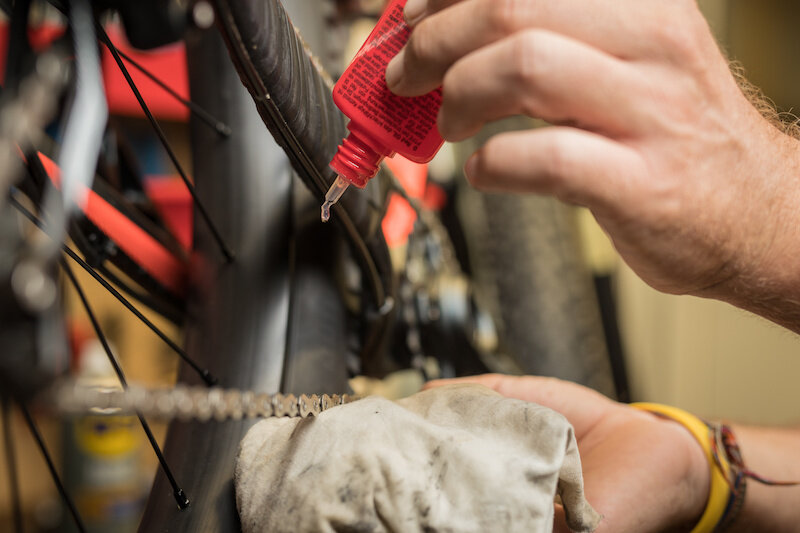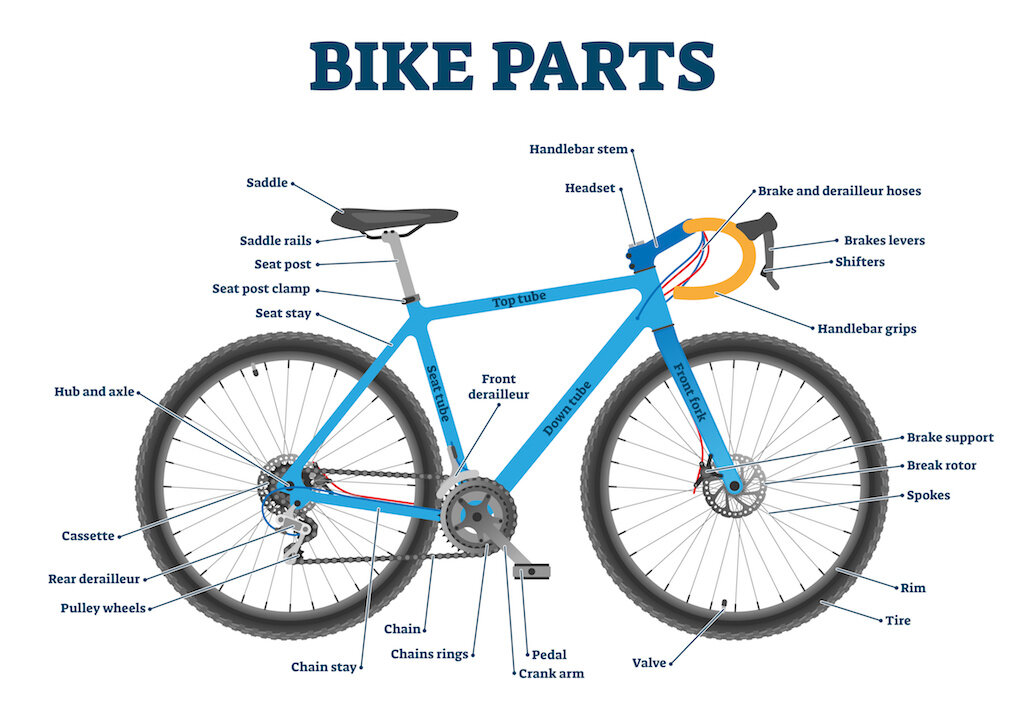There are two main types of lubricants:
Oils
A liquid that cannot mix with water and creates a sliding film between two moving surfaces
Greases
An oil with thickening additives
Grease: A sponge full of oil
Grease is a thickened oil. The thickener within a grease acts like a sponge by holding the base oils and additives together. Since grease is a “sponge” it will collect dirt. A greased chain will collect dirt and gum up very quickly, which is why moving parts use oil as opposed to grease.
Lubricants: Oils & Greases
Both oils and greases are lubricants, which reduce friction on moving parts and form a seal or barrier to protect components against water, corrosion and between different metals.
Drivetrain: Oil
The bicycle’s drivetrain are the most heavily used components and requires an oil lubricant. The chain is low to the ground and exposed to all the elements of weather and dirt, as are the jockey wheels, derailleur, and cogs.
Derailleurs: Oil
The derailleurs only has a few working parts. Keeping this unit clean, is very important, as the derailleur is one of the most problematic components.
Grit and dirt make their way into the bearings, which then act as sandpaper onto the mechanism, causing wear, which results in poor shifting. After cleaning, oil the derailleur pivots, cage pivot(s), and pulley centers and wipe off the excess oil.
Cables: Oil
Un-lubricated cables don’t glide through cable housing as smoothly, which negatively affects braking and shifting while also being susceptible to rusting by causing cable drag. If you are using a wet chain lubricant, such as Pedaling Science’s All-Weather lube, you can use the same oil for your cables.
Brake Levers
Brake levers, like any other moving part, can benefit from a little oil. If these components go dry then the friction will damage the cable, lever, or both.
Shifters
These are sensitive components, but they still benefit from a very light oil or a dry lubricant.
Threadlocker & Antiseize
Threadlocking Compounds
Threadlock is an adhesive compound that stops threads and press-fittings from loosening.
Anti-Seize Compounds
Anti-seize compounds are made of ground metals and combined with lubricants, NOT making them appropriate for moving parts, such as bearings or bottom bracket bearings.
These solutions are used to protect from corrosion and reduce friction on non-moving components, such as seatposts, bottom bracket cups, pedal threads, and press-fit components.
Jesse (Director of Pedal Chile) lives in La Patagonia of Chile. Jesse has a Master of Science in Health and Human Performance and a Bachelor of Science in Kinesiology. Hobbies: Riding singletrack, snowboarding, reading, and researching.
Sources & References
C Calvin Jones. Big Blue Book of Bicycle Repair : A Do-It-Yourself Bicycle Repair Guide from Park Tool. Saint Paul, Mn, Park Tool Co, 2019.
Davis, Mike, and Guy Andrews. Complete Mountain Bike Maintenance. Google Books, A&C Black, 12 June 2014.
Downs, Todd. The Bicycling Guide to Complete Bicycle Maintenance & Repair for Road & Mountain Bikes. Emmaus, Pa., Rodale, 2010.
Sidwells, Chris. Bicycle Repair Manual. New York, New York, Dk Publishing, 2021.

















